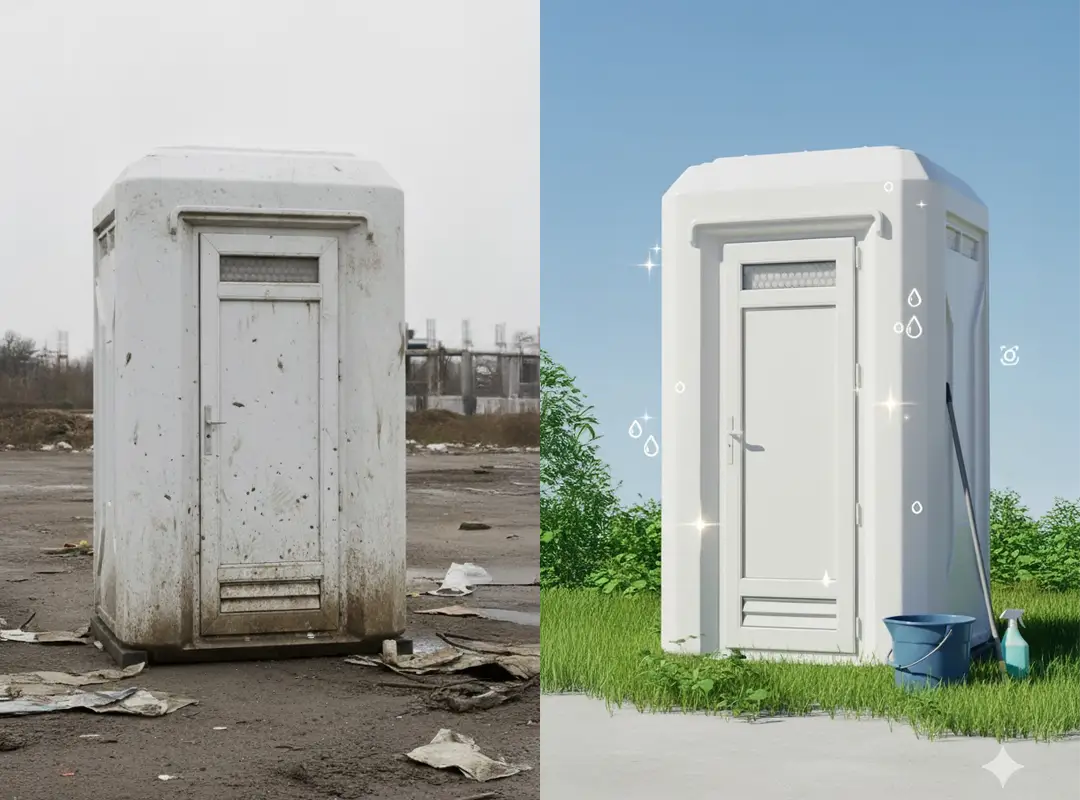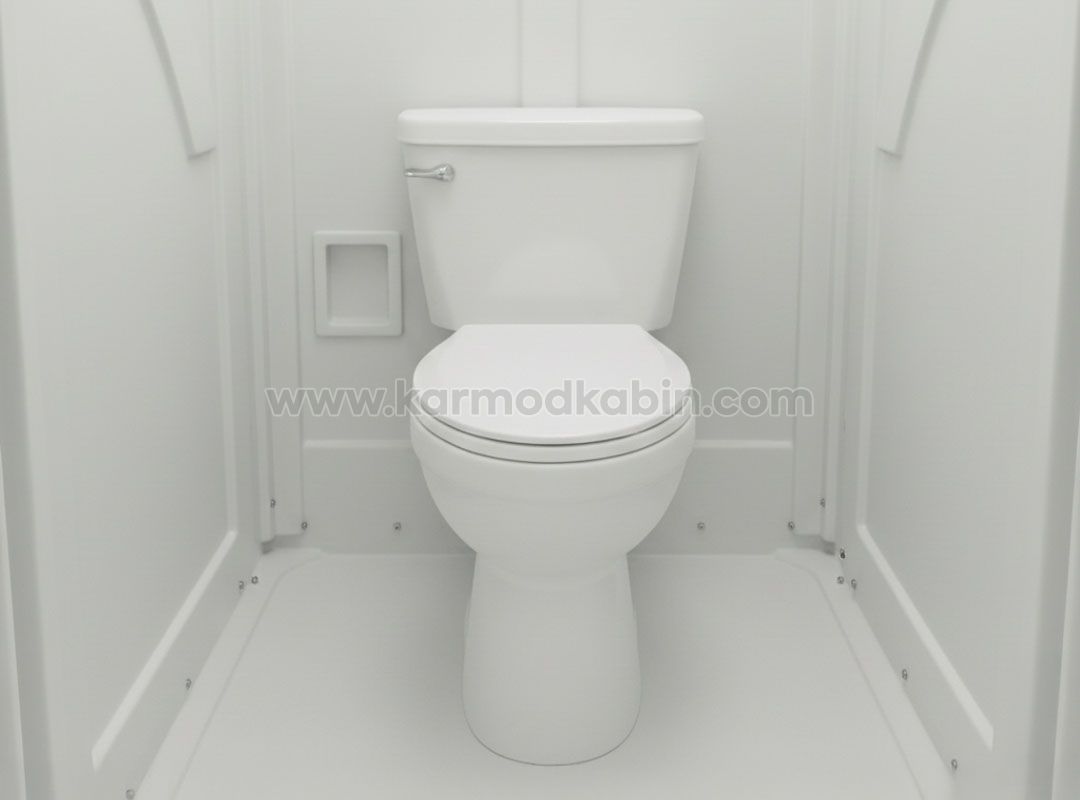
Long-term construction sites, infrastructure projects, and seasonal outdoor operations demand reliable sanitation facilities. Portable toilets, often seen as a temporary convenience, become a critical element in these environments. They protect worker health, keep sites compliant, and prevent costly downtime. Poorly maintained units, however, can quickly lead to frustration, odor complaints, and even legal fines.
A successful maintenance strategy is not only about cleanliness; it is also about maximizing the return on your investment. Well-maintained portable toilets last longer, require fewer emergency repairs, and reflect professionalism to clients, inspectors, and employees alike. This comprehensive guide explores every aspect of portable toilet maintenance for long-term projects—helping you reduce costs, boost efficiency, and safeguard your operations.
On short-term events, a quick cleaning may suffice. But in projects lasting months, portable toilets can either support productivity or cause constant disruptions. Workers who have access to clean facilities stay focused and healthy, while neglected toilets result in lost time and health risks.
From a compliance standpoint, sanitation is closely monitored on construction sites. Health inspectors often check hygiene conditions, supply levels, and waste management. Failure to meet these standards can result in fines, project delays, or even work stoppages. In long-term contexts, proper maintenance is not optional—it is the foundation of operational success.
The foundation of efficient maintenance begins with the right choice of unit. Not all portable toilets are created equal, and opting for cheaper, event-style models is a mistake on long-term projects.
Look for durable designs that include:
While upfront costs may be slightly higher, these units reduce the need for repairs and replacements, saving both time and money throughout the project.
Daily maintenance is the backbone of long-term success. Small tasks performed consistently prevent bigger issues later. These include:
Assigning clear responsibilities helps ensure daily tasks are never overlooked. With just a few minutes per day, teams can keep toilets in functional, presentable condition that boosts worker morale.
Daily care is essential, but it must be complemented by thorough weekly servicing. This includes complete waste tank pump-outs, deep scrubbing, and sanitization of all interior surfaces.
Outsourcing to professional sanitation service providers can often be the most efficient option. They bring specialized equipment and high-grade cleaning agents, ensuring compliance with local regulations while freeing up your team to focus on core project tasks.
Waste tank management is critical for avoiding unpleasant surprises. The frequency of pump-outs depends on usage and weather conditions:
Planning pump-outs in advance prevents emergency call-outs, which are often more expensive and disruptive.
Nothing damages morale faster than unpleasant odors. Long-term projects especially demand reliable odor control strategies. These include using chemical deodorizing solutions, installing urinal screens, and maintaining adequate ventilation.
For best results, advanced models with solar-powered fans or passive air vents are recommended. They continuously circulate air, reducing odor even during peak usage.
Cold weather creates unique sanitation challenges. Freezing can damage tanks, pipes, and doors, leading to downtime and costly repairs.
To prepare for winter:
With proper preparation, portable toilets can remain fully operational even in sub-zero conditions.
Hygiene goes beyond the toilet itself. Handwashing stations and sanitizer dispensers are vital for worker health. Long-term projects require strict refill cycles to prevent shortages.
A practical system includes:
Maintaining hygiene not only reduces illness but also improves inspector satisfaction.
Portable toilets are exposed to environmental risks such as wind and vandalism. Preventive steps reduce repair costs and service interruptions:
These small measures protect your investment and extend the lifespan of the units.

Where portable toilets are placed influences both usability and longevity. Units located too far away are often underused or abused, while those placed in high-traffic areas are overburdened.
Strategic placement tips:
Smarter placement extends lifespan and reduces complaints.
Health and safety inspectors have strict expectations. They check cleanliness, supply levels, accessibility, and safe waste disposal. Poor maintenance here risks costly penalties.
By keeping detailed cleaning logs, ensuring all supplies are stocked, and conducting routine inspections, managers can show compliance with confidence.
Keeping records is not just for compliance—it improves efficiency. Traditional paper logs are useful, but digital solutions such as QR code check-ins make the process faster and more transparent.
These records help identify patterns such as frequently used units or recurring supply shortages. Over time, this data allows managers to optimize maintenance schedules.
At some point, repair costs outweigh the benefits. Signs that a unit may need replacement include persistent odor problems, cracked or warped panels, and broken doors that no longer close properly.
Investing in new durable units saves more money over time than repeatedly fixing older models. This is how managers protect the total cost of ownership (TCO).
Modern upgrades streamline maintenance. Installing hands-free dispensers reduces soap waste and minimizes contact. Solar-powered ventilation improves air quality, while urinal screens maintain freshness between pump-outs.
Each upgrade might seem small, but combined, they reduce overall servicing requirements and enhance user satisfaction.
Even the best sanitation equipment will fail without responsible use. Site teams should receive short, clear SOPs (standard operating procedures) on how to report issues, close doors securely, and check supplies.
Building a culture of hygiene increases respect for facilities. Workers are more likely to care for toilets that are consistently clean and well-stocked.
Budgeting for sanitation is often underestimated. Emergency repairs and unplanned pump-outs are always more expensive than proactive care.
Smart budgeting includes:
This strategic approach avoids unexpected costs and keeps the project running smoothly.
As projects near completion or extension, sanitation should be double-checked. Pumping tanks, deep-cleaning interiors, and repairing minor damages prevents disputes with site owners or clients.
Well-maintained toilets at handover demonstrate professionalism and help secure future contracts by showing attention to detail.
A long-term project deserves sanitation solutions that work as hard as your team does. Well-built portable toilets reduce maintenance demands, prevent costly breakdowns, and ensure that your site remains safe and professional throughout the project timeline.
By choosing to purchase your own units, you gain complete control over maintenance, availability, and cost-efficiency. Instead of relying on temporary rentals or patchwork fixes, investing in durable portable toilets provides lasting value and a dependable solution that pays off over time.
When you own your units, you benefit from:
Secure the sanitation your project truly needs. Purchase your portable toilets today and build a reliable foundation for long-term success.